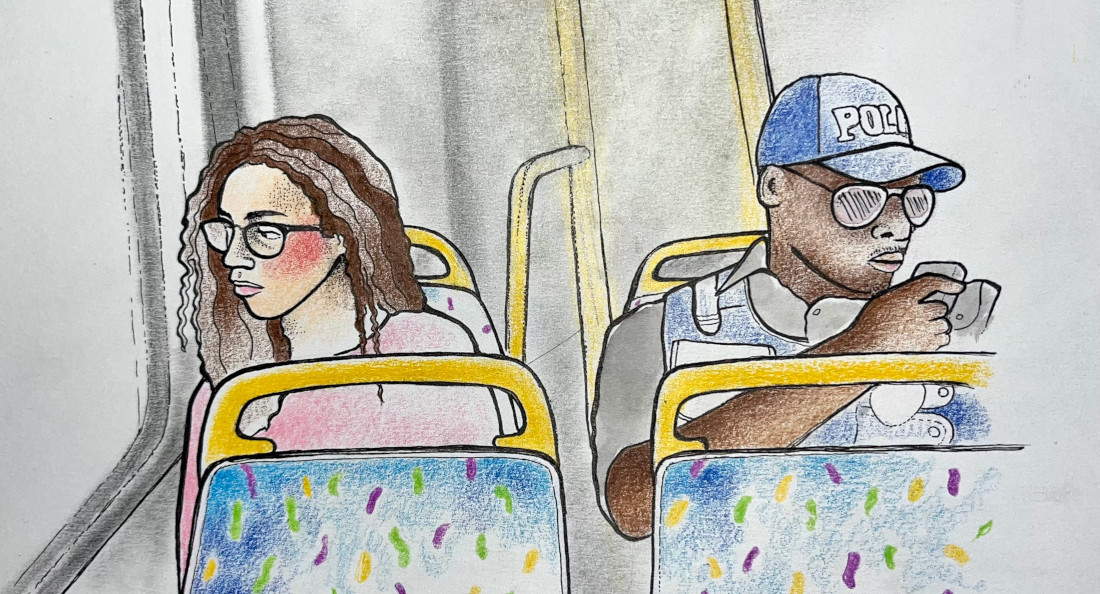Winnipeg Transit safety officers will ride buses next month
Security personnel may increase social injustices
The long-promised Winnipeg Transit safety officers will start patrolling buses and bus routes in mid-February, but not everyone in the city will be happy to see them.
Twenty-one safety officers and two supervisors began their six weeks of training on Jan. 15. They will learn conflict resolution, non-violent crisis intervention and de-escalation techniques. According to a CBC News report by Cameron MacLean, Indigenous awareness training will only make up part of the first two days.
In response to an increase of reported crimes on public transportation, Mayor Scott Gillingham pledged in March 2023 to make buses safer by putting a transit security plan in place.
There were 104 assaults against bus drivers in 2022, the highest recorded number since 2000, the earliest year for which data is available, and 91 assaults against drivers recorded in 2023 as of Oct. 13, according to a Winnipeg Free Press article.
Recently, the Winnipeg Police Association filed a grievance with the City of Winnipeg. They said safety officers are not police and shouldn’t have the ability to arrest people, which violates their collective agreement with the union.
Officers will carry first-aid and naloxone kits, handcuffs, collapsible batons and have the authority to arrest and detain people.
However, more officers won’t stop crime from happening – they’ll just intervene, Kevin Walby, a University of Winnipeg criminal-justice professor, says.
Walby, who has studied different methods of social control including police and community safety officers, worries these new officers might create more problems than they solve.
“I believe that these kinds of social controls ... (are) at best just bandaids for social issues that have more economic roots,” he says. “At worst, they’re invasive, and they create more injustices.”
Increased control in public spaces can lead to higher rates of racial profiling and more pervasive surveillance, Walby says.
He adds the “knee-jerk reaction” in other cities experiencing similar issues to Winnipeg is to increase control on buses. Instead, Walby says the City should increase funding for mental-health programs, substance-use and addiction treatments, harm-reduction efforts and housing.
“We’re kind of allocating the resources in the wrong part of the process and at the wrong time,” he says. “We’re reacting way after the fact.”
Bob Chrismas leads the City of Winnipeg’s community safety team and says officers will patrol the 11, 15, 16, 18 and 47 routes, where the most serious incidents have been reported.
He spent 34 years with the Winnipeg Police Service and calls the safety-officer program a “necessary element” of Winnipeg services that’s “been missing for several years.”
Chrismas plans to collect feedback from riders and drivers after officers start patrolling. He believes the approach will make the buses safer for riders and drivers.
“Our approach and strategies will evolve depending on community needs,” he says. “The idea is to have a compassionate approach and (be) trauma-informed.”
Improving lighting and seating, creating more routes and more frequent buses and incentivizing transit for riders could make them feel safer, Walby says.
A paper published by the Canadian Public Policy journal in December 2023 found there’s no data showing that increasing police funding will reduce crime rates. It analyzed data from the past 10 years in various cities, including Winnipeg, Vancouver, Edmonton and Toronto.
Winnipeg Transit has spent $9.6 million on safety initiatives since 2017. Since then, they’ve added de-escalation training for drivers and installed safety shields and audio and video surveillance systems in all buses.
“At this point ... (increased surveillance) isn’t creating a healthier Winnipeg or a healthier society,” Walby says.
Published in Volume 78, Number 15 of The Uniter (January 25, 2024)







